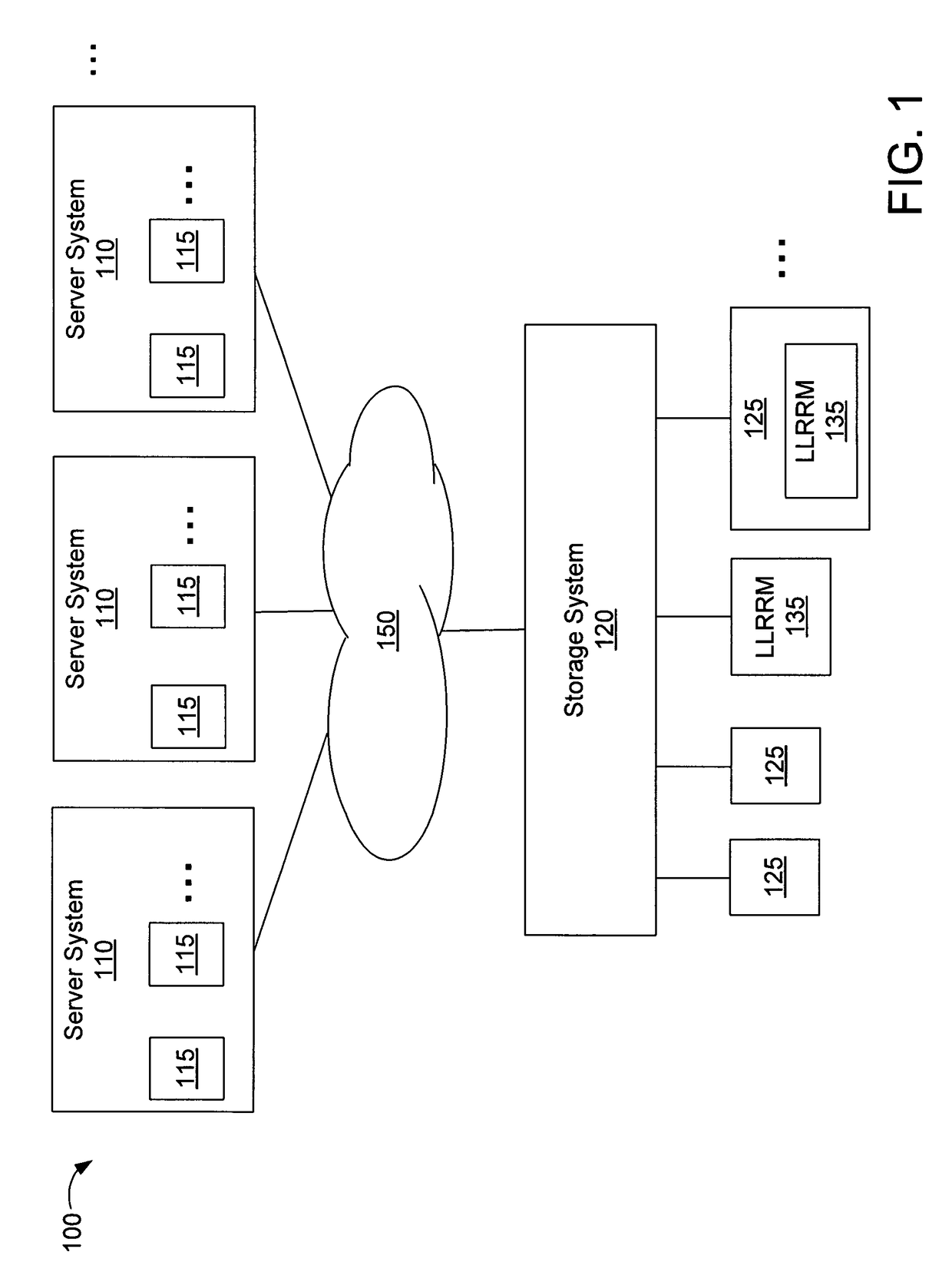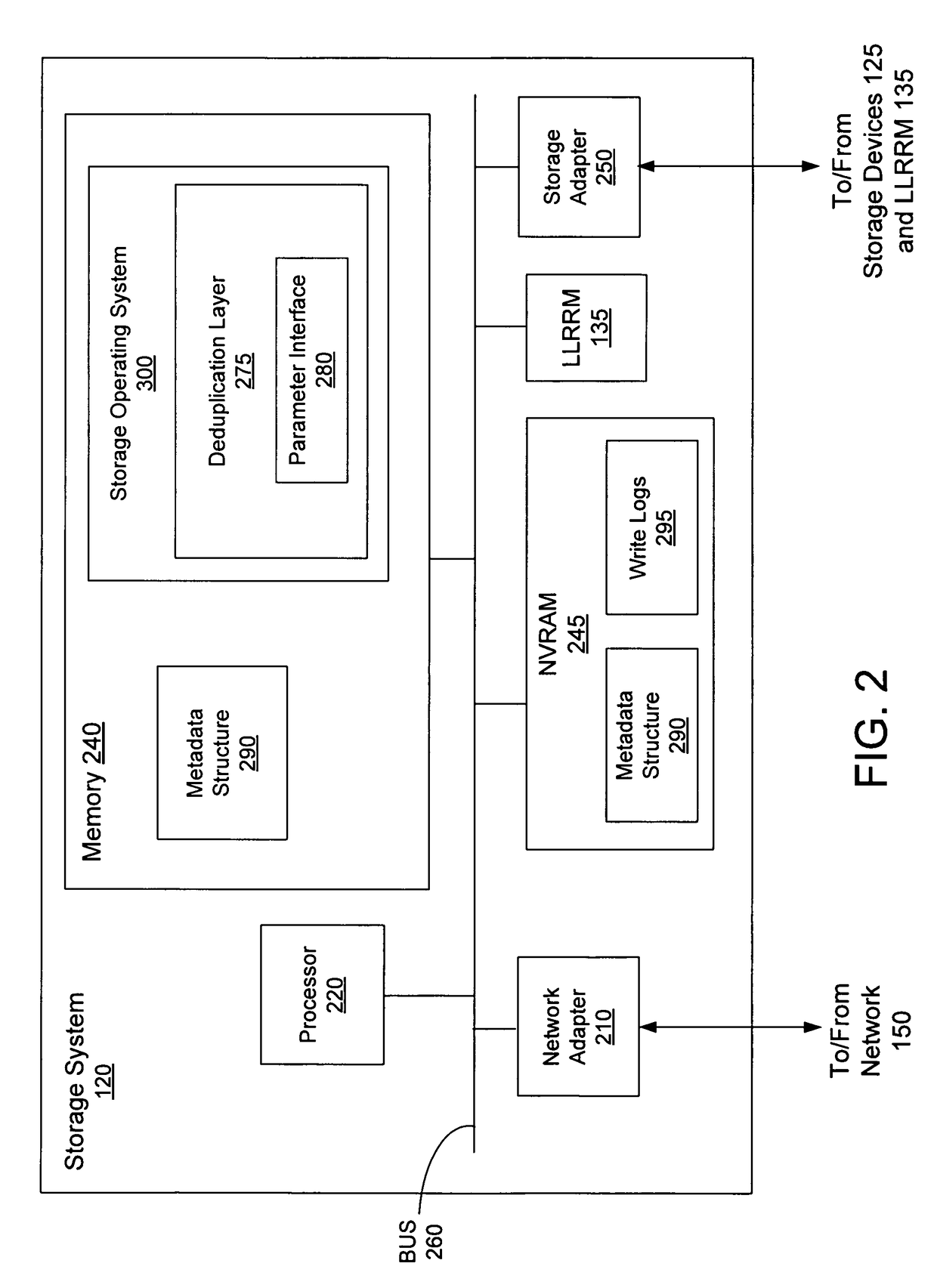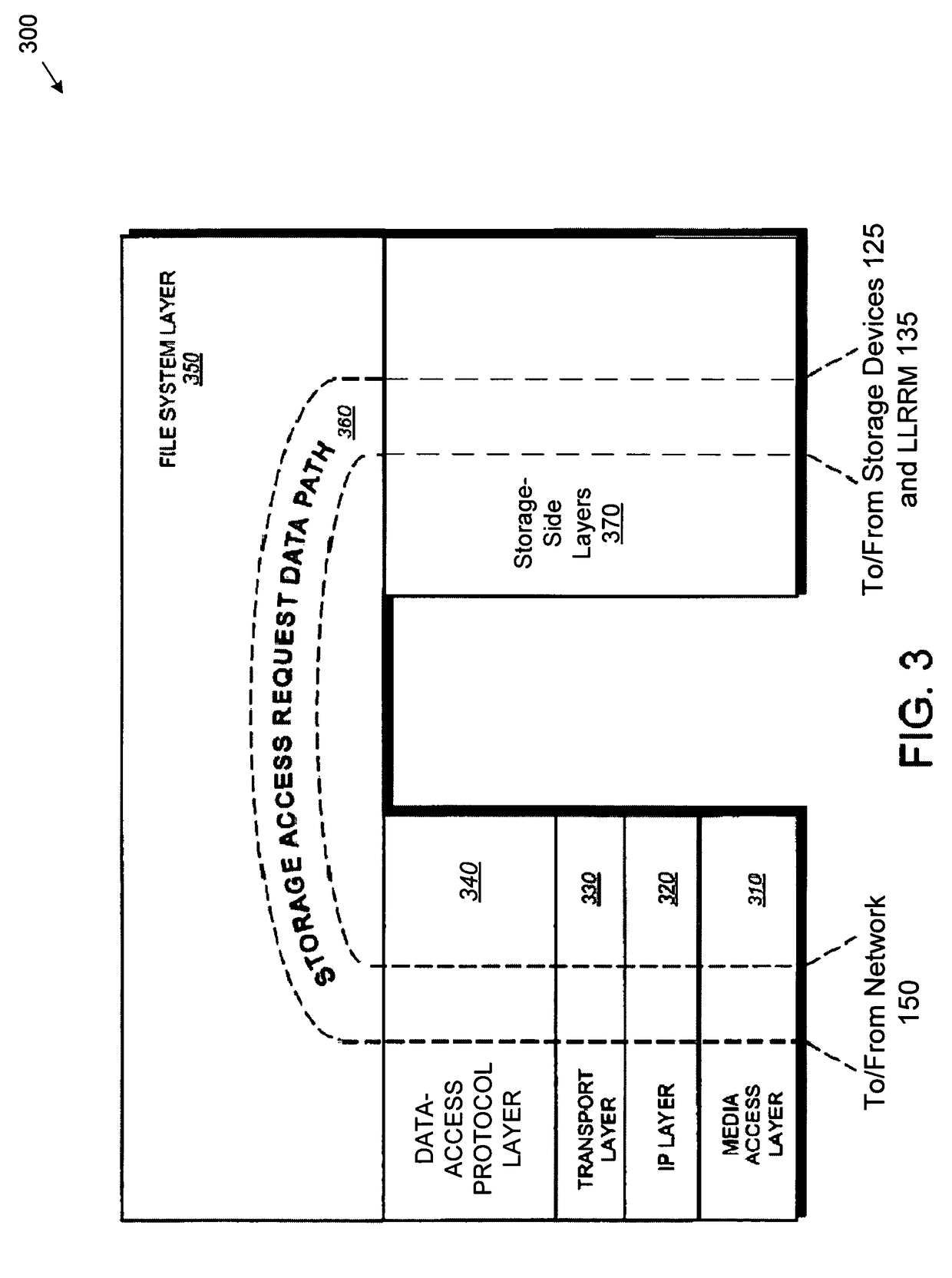Deduplication of data on disk devices using low-latency random read memory
a random read and data technology, applied in the field of storage systems, can solve the problems of significant read latency, long read latencies, and significant seek times for the read/write head of the disk device, and achieve the effects of reducing read latency, reducing read latency, and reducing read latency
- Summary
- Abstract
- Description
- Claims
- Application Information
AI Technical Summary
Benefits of technology
Problems solved by technology
Method used
Image
Examples
Embodiment Construction
[0034]In the following description, numerous details are set forth for purpose of explanation. However, one of ordinary skill in the art will realize that the embodiments described herein may be practiced without the use of these specific details. In other instances, well-known structures and devices are shown in block diagram form in order not to obscure the description with unnecessary detail.
[0035]The description that follows is divided into six sections. Section I describes a storage system environment in which some embodiments operate. Section II describes deduplication of data on disk devices. Section III describes deduplication of data using LLRRM. Section IV describes block-comparison and mapping mechanisms used for deduplication of data using LLRRM. Section V describes methods for implementing deduplication of data using LLRRM. Section VI describes using the deduplication methods for using LLRRM described herein in combination with a deduplication method for disk devices ba...
PUM
 Login to View More
Login to View More Abstract
Description
Claims
Application Information
 Login to View More
Login to View More - R&D
- Intellectual Property
- Life Sciences
- Materials
- Tech Scout
- Unparalleled Data Quality
- Higher Quality Content
- 60% Fewer Hallucinations
Browse by: Latest US Patents, China's latest patents, Technical Efficacy Thesaurus, Application Domain, Technology Topic, Popular Technical Reports.
© 2025 PatSnap. All rights reserved.Legal|Privacy policy|Modern Slavery Act Transparency Statement|Sitemap|About US| Contact US: help@patsnap.com



